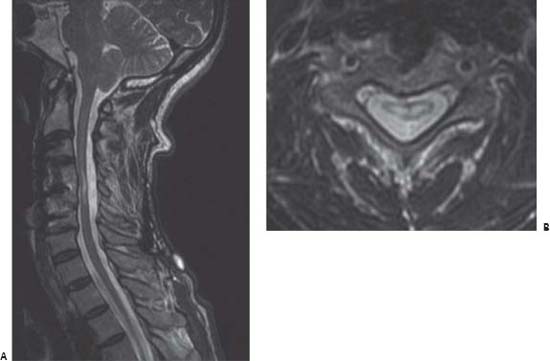Case 79 Spasticity after Cord Injury
Remi Nader
- A 64-year-old man presents 6 years after having sustained a motor vehicle accident.
- The patient is a recovered C4 partial quadriplegic who underwent a C4 corpectomy and C5–6 anterior cervical diskectomy and fusion about one year ago.
- He now presents with some upper extremity pain and bilateral shoulder pain.
- He has some persistent spasticity in both upper and lower extremities, unsteady gait, and difficulties with bladder control.
- Hyperreflexia and muscle atrophy are seen diffusely on examination.
- He has been taking baclofen, tramadol, and diazepam, but the effect of the medications seems to have worn offdespite a recent increase in dosage.
- Magnetic resonance imaging (MRI) of the entire spine is done, and the only pertinent positive findings are shown in Fig. 79.1.
Fig. 79.1 Magnetic resonance imaging of the cervical spine: (A) T2-weighted images with midsagittal section and (B) a xial sec tion through C4–5 level.
< div class='tao-gold-member'> Clinical Presentation
Clinical Presentation
 Questions
Questions Answers
Answers


